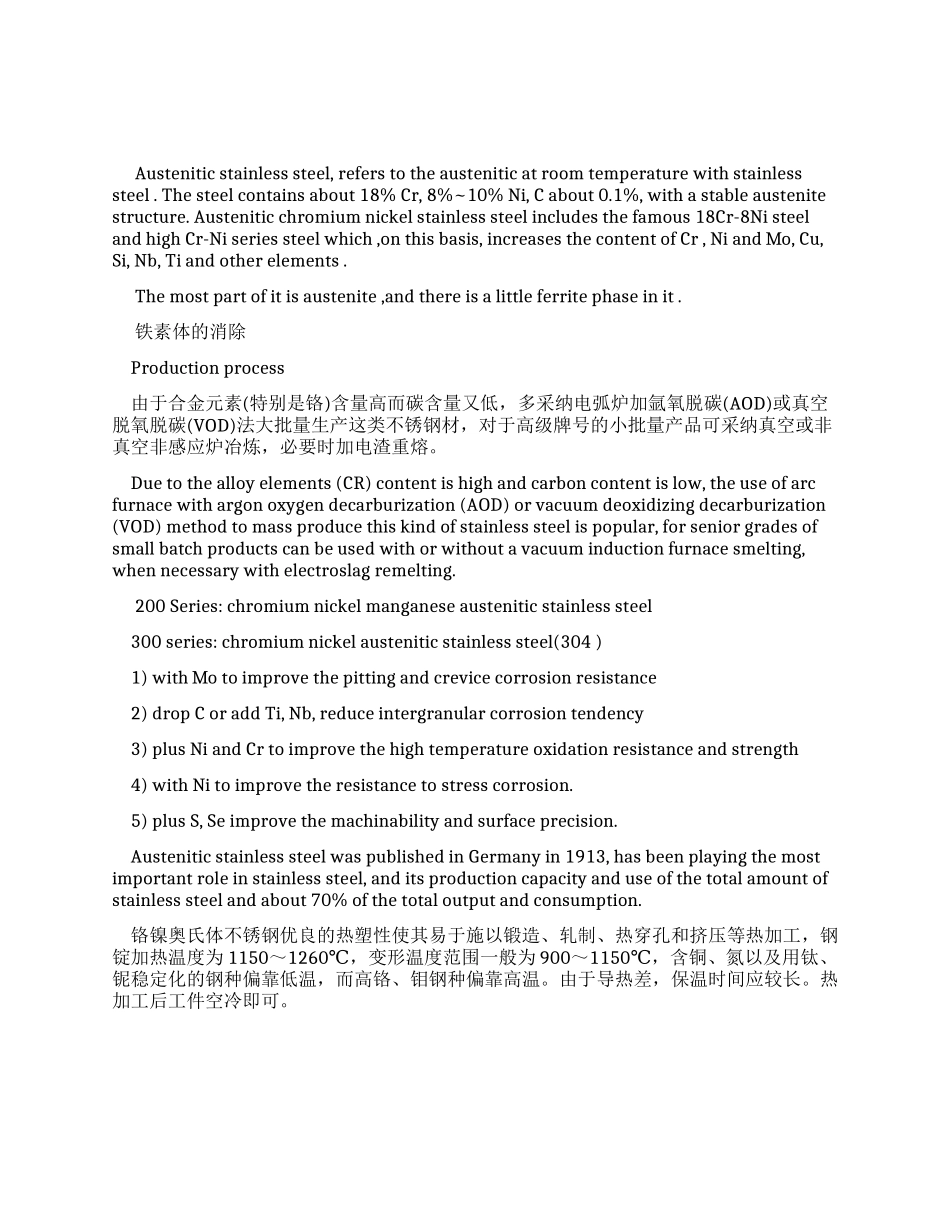Austenitic stainless steel, refers to the austenitic at room temperature with stainless steel . The steel contains about 18% Cr, 8%~10% Ni, C about 0.1%, with a stable austenite structure. Austenitic chromium nickel stainless steel includes the famous 18Cr-8Ni steel and high Cr-Ni series steel which ,on this basis, increases the content of Cr , Ni and Mo, Cu, Si, Nb, Ti and other elements . The most part of it is austenite ,and there is a little ferrite phase in it . 铁素体的消除 Production process 由于合金元素(特别是铬)含量高而碳含量又低,多采纳电弧炉加氩氧脱碳(AOD)或真空脱氧脱碳(VOD)法大批量生产这类不锈钢材,对于高级牌号的小批量产品可采纳真空或非真空非感应炉冶炼,必要时加电渣重熔。 Due to the alloy elements (CR) content is high and carbon content is low, the use of arc furnace with argon oxygen decarburization (AOD) or vacuum deoxidizing decarburization (VOD) method to mass produce this kind of stainless steel is popular, for senior grades of small batch products can be used with or without a vacuum induction furnace smelting, when necessary with electroslag remelting. 200 Series: chromium nickel manganese austenitic stainless steel 300 series: chromium nickel austenitic stainless steel(304 ) 1) with Mo to improve the pitting and crevice corrosion resistance 2) drop C or add Ti, Nb, reduce intergranular corrosion tendency 3) plus Ni and Cr to improve the high temperature oxidation resistance and strength 4) with Ni to improve the resistance to stress corrosion. 5) plus S, Se improve the machinability and surface precision. Austenitic stainless steel was published in Germany in 1913, has been playing the most important role in stainless steel, and its production capacity and use of the total amount of stainless steel and about 70% of the total output and consumption. 铬镍奥氏体不锈钢优良的热塑性使其易于施以锻造、轧制、热穿孔和挤压等热加工,钢锭加热温度为 1150~1260℃,变形温度范围一般为 900~1150℃,含铜、氮以及用钛、铌稳定化的钢种偏靠低温,而高铬、钼钢种偏靠高温。由于导热差,保温时间应较长。热加工后工件空冷即可。
